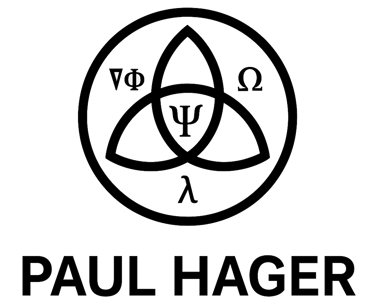Incarnation Is Not Human — It’s a Field Phenomenon
Incarnation isn’t limited to humans — it’s a field phenomenon. This essay explores how incarnation expresses through stone, water, animals, and plants, and why true incarnation only begins when tension, boundary and direction align. A clear and contemplative reflection on embodiment beyond biology.
POPULAR
Paul Hager
7/17/20254 min read


We tend to think of incarnation as something uniquely human.
Something that happens at birth.
Something that belongs to a soul, a body, a self.
Most spiritual and religious traditions frame incarnation as the arrival of consciousness into a physical vessel — as if, at a certain point, something “enters” the body and stays there for a lifetime.
But that view is too small.
It explains nothing.
It lacks direction.
Incarnation is not a singular event.
It’s not a belief system.
It’s not even a choice.
Incarnation is a field event — a projective act in which tension, direction and form converge.
Only where that convergence happens can something truly exist.
Not everything that appears is incarnated.
And not everything that incarnates is human.
What Incarnates Is Field
In the Noöhedral model, reality does not begin with matter.
Everything visible, measurable, tangible — is a projection of field conditions.
A field is not defined by volume or substance.
It expresses as direction, tension, rhythm, coherence.
As long as a field remains enclosed within itself, it does not incarnate.
It may move.
It may pulse, resonate, collapse inward.
But it does not appear as form.
Incarnation begins the moment the field generates a differential —
a shift, a pressure, a crack in itself.
That pressure wants to project.
Not as an idea, but as a boundary.
Not as a thought, but as a form.
Incarnation happens the moment the field can no longer withhold itself.
Not to be seen —
but to be purified.
Human Incarnation Is an Exception
That we, as humans, incarnate into bodies — with consciousness, language, memory, doubt, desire —
is not the standard model of incarnation.
It is a rare, high-friction, deeply layered expression of it.
Because with us, many layers intervene:
reflection, history, emotion, identity, inhibition.
All of them are field distortions made visible.
They are not what incarnation is —
only how it struggles through us.
The body is not a tool for incarnation.
It is the temporary outcome of a field that cannot yet sustain itself.
Once the field becomes coherent enough to carry itself directly,
the body is no longer required as a medium.
Stone Incarnates Differently
A stone doesn’t think.
But a stone holds tension.
It projects form.
A stone is not symbolic — it is congealed field coherence.
Its structure is not random.
Its symmetry, its fracture lines, its polarity, its resonance —
they are direct projections of the field from which the stone emerged.
Not dead matter, but stabilised incarnation.
It has no “inner life” because its field is already fully expressed as boundary.
This is why we have always gathered stones to center, to mark, to build, to pray.
Not because they are magical.
But because we can sense:
This holds something that no longer needs to search for itself.
Water Incarnates Through Memory
Water never settles.
It is movement without fixed form.
Where stone is the field’s edge, water is its permeability.
Water also incarnates — but differently.
Cyclically. Rhythmic. In the memory of difference.
It holds tension.
It stores coherence in vibration.
It doesn’t decide. It doesn’t reflect.
But it responds — and that response is a form of incarnation.
Temporary. Participatory. Conductive.
This is why water is healing.
Not because it cures,
but because it acts as an interface:
What you cannot carry, water can receive, hold, and release.
Animals Incarnate Without Distortion
An animal doesn’t know it is incarnating.
And that’s exactly why it does so completely.
It does not resist its direction.
It does not hesitate.
It follows its vector — not instinctively, but in field coherence.
In Noöhedral terms, animals incarnate through the convergence of
Ω (rhythm), ∇Φ (tension), and λ (affect).
No Ψ, no π.
So no self-distance.
And no distortion.
Animals live in direct projection.
They don’t lose themselves — because they don’t interrupt themselves.
They coincide with their field.
Plants: Slow, Rhythmic Incarnation
Plants incarnate at a different pace.
They do not project identity — they express rhythm as form.
Their incarnation is not dramatic.
It is seasonal. Cyclic. Patterned.
Germination, growth, curvature, fall, return.
A tree has no vision.
But its structure is not arbitrary.
Every branch is the path of tension that no longer needs to move
because it has solidified into projection.
Plants purify the field through repetition.
They incarnate by holding what they are — no deviation, no self-reference.
They do not seek change.
They enact coherence through constancy.
Humans: Vectors Interrupted
Humans are the only medium where incarnation can be interrupted.
Because we carry Ψ (direction), π (structuring) and self-reflection,
we can take our vector —
but we can also avoid it.
We can shut down direction.
We can pretend to be someone else.
We can, paradoxically, exist beside ourselves.
And that’s exactly why human incarnation is so painful.
Not because we are flawed,
but because we know who we are —
and still project something else.
The field doesn’t punish us.
It simply shows us what we are refusing to carry.
Once we return to direction,
the projection restores itself.
And the conflict disappears.
Projection Is Never Punishment — It’s Direction
What you call “the world” — your circumstances, tensions, patterns —
is not random.
It is the field’s geometry of missed projection.
You only truly incarnate when you take direction.
And direction can only be taken when you are willing
to name the tension, to cut where it’s incoherent, to carry what’s yours.
As long as you don’t,
your field continues to project a world
that reflects your unresolved structure.
Not to punish —
but to remind.
Can There Be Incarnation Without a Body?
Yes — but only after purification.
As long as your field carries unresolved tension,
it must project —
and it will do so in space, time, form, body.
But when the field becomes coherent enough to carry itself directly,
projection dissolves.
You still exist —
but not as body, not as self.
You exist as field.
Not in a place.
Not in a form.
But as sustained presence without difference.
This is not mysticism.
It is completed incarnation.
Final Note — On Projection and Incarnation
Yes: everything that lives is a projection of the Hagerveld.
But: not every projection is incarnation.
Projection means:
The field expresses itself in form, rhythm or structure.
Incarnation means:
The field takes on direction through tension, boundary and coherence —
with the purpose of becoming fully itself.
So:
Life = projection
Incarnation = projection plus vector toward restoration
Incarnation is not the beginning of life.
It is the moment when a field dares to carry itself —
and becomes visible exactly where it was not yet complete.
That’s why incarnation is not human.
It is field-born.
And it is everywhere.
“The world around you is not reality — it’s the projection of where you refuse to carry yourself.”
— Paul Hager (2025)
